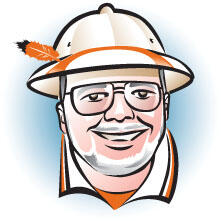
We twa hae paidl’d i’ the burn,
frae morning sun till dine;
But seas between us braid hae roar’d
sin auld lang syne.
And there’s a hand, my trusty fiere!
and gie’s a hand o’ thine!
And we’ll tak a right gude-willy waught,
for auld lang syne.
— Robert Burns, 1788
Each year for the holidays I try to put together a little gift, in part because this particular column will be current online for over a month while you’re celebrating with loved ones and/or families (who am I to judge?), and it seems like a friendly thing to do. In this vein, it strikes me that I’m far in arrears regarding some kind words about my own long-suffering spouse and her favorite Princetonian.
Who is not me. Big surprise.
Beth s’70 did not have a chance to apply to Princeton; it didn’t consider folks of her sex to be worth worrying about then, although by the time we each graduated that had thankfully changed. Like many thoughtful women in the ’60s, she felt her strongest bet was to go to a women’s college where those of the macho persuasion wouldn’t muck up her education, and she matriculated at Wilson College in Chambersburg, Pa. She and her equally assertive cohort there got a first-rate education not only academically (she’s Phi Beta Kappa, which was not then a common distinction among those of us Princetonians previewing Disraeli Gears at WPRB in Holder basement) but also in self-confidence and leadership, and their generation did the heavy lifting on women’s rights, which like all great fundamental societal achievements thereinafter has been taken woefully for granted. But the dirty little secret of all these independent women was their mutual crush on an older married man.
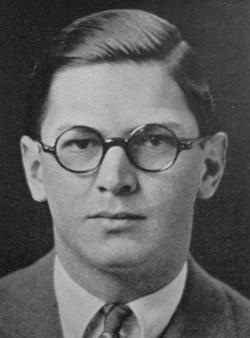
While they simply called him Prexy, he had a normal name for use in public; it was Paul Swain Havens ’25, and he had been president of Wilson College for 31 years when Beth began there. Taking over in the middle of the Depression, he persevered through World War II (my roommate’s mom and a faithful reader, Beatrice Fenner Blackadar s’42, was his student there, too), Korea, women’s rights, civil rights, Vietnam, and Janis Joplin. In the great tradition of Princeton-educated academics, this stellar Rhodes Scholar, Bric editor, swimmer, and champion debater who grew up at Lawrenceville School devoted his working life to higher education, intriguingly with those who wouldn’t be allowed at Princeton, much like Isaac Norton Rendall 1852 who earlier was pivotal in the advancement of college education for black Americans. And the girls (please pardon me, ladies, I’m making a point here) worshiped him. In decades of talking to Wilson alumnae, I’ve yet to hear a cross word about him, any indication he was anything but a guiding star to the thousands of capable women he sent into the myopic, sexist outside world. He died in 1980, 10 years after his retirement; we all could do worse than have dozens upon dozens of beautiful women sobbing over us at our funeral, their husbands looking on quizzically.
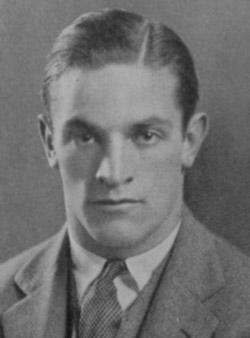
Havens was a classmate of Charlie Caldwell ’25 . A member of the football Team of Destiny in 1922, Caldwell connected the Bill Roper 1902 era to the flowering of big-time football after World War II. Baseball was actually Caldwell’s best sport, and he had a cup of coffee with the Yankees in 1925 before becoming an assistant to Roper, then on to Williams as head football coach. In 15 years he was 76-37-6 there, capping it in 1942 with a 19-7 upset over Princeton. As World War II ended, the Tigers brought him in to rebuild football, and he did just that and more, winning two Lambert Trophies in 1950-51 , when he was named national college football coach of the year in the midst of an unmatched 24-game winning streak. He went 70-30-3 in 12 years with his superbly polished single-wing offense; only cancer at age 56 stopped his march through the Princeton record books, and his mantle was donned by his chosen successor, Dick Colman, who won 75 more games with the same system over the next 12 years. Both are in the College Football Hall of Fame.
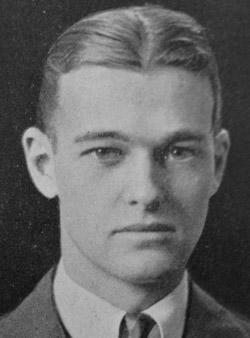
Caldwell and Havens were classmates of George Kennan ’25 . Something of a shy nerd as an undergraduate with a gift for languages and any musical instrument he was handed, he played in dance bands to earn some extra spending money. Always a bit of an odd duck, Kennan joined the U.S. foreign service and became a singular personage in 20th-century world affairs. He was on the scene in Moscow at the end of World War II, where he wrote the famed “Long Telegram” that set the philosophical underpinning for the United States’ long-term containment policy toward the Soviet Union in the Cold War, and in the short run for the Marshall Plan in Europe as well. Becoming highly disenchanted with the militarism this brought about – according to Kennan, a serious misreading of his ideas – he became the giant of American foreign-policy advisers for an astonishing length of time and a revered presence in Princeton, where he held forth at the Institute for Advanced Study. A powerful and lucid writer on national policy and foreign relations, he won two Pulitzer Prizes and two National Book Awards, along with 29 honorary degrees and the Presidential Medal of Freedom. He was still on the scene when Secretary of State Colin Powell spoke at Kennan’s 100th-birthday symposium at the University; he died one year later, in 2004, in many senses the last original (and triumphant) combatant of the Cold War.
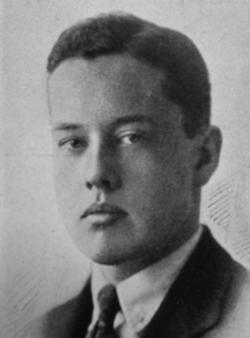
And Kennan, Caldwell, and Havens were classmates of Malcolm Warnock ’25, who outlasted them all – remarkably, even Kennan. As far as we know, he lived longer than any alumnus in the 266 years of Princeton University, having passed Steven Hirsch ’17 a couple years back before Warnock died Oct. 9. There was something peculiar about ’25; while Warnock returned to Reunions each year and won the Class of ’23 Cane for the senior returning alumnus eight times – a record – he lost it five times to older classmates, once to John Jenney ’25 and four times to Leonard Ernst ’25, who made it to 103 himself. Warnock in fact almost transcended the P-rade and became an event on his own; waiting for his return each year from his New Jersey home was an enthralling activity, and even at 106 he came early, primarily for the alumni-faculty forums and the president’s conversation with alumni, then incidentally stayed around to collect the cane and hop in his golf cart for the P-rade. He knew he was inspiring other people – if only that they sensed the uniqueness of someone back on campus 91 years after matriculating – and he was plenty sharp enough to bask in it and take the whole occasion with good humor and bravado.
As an undergrad, Warnock had fallen prey to the ethos of the Roaring ’20s, in his case with too much time spent with the University Orchestra, the Glee Club, and on Prospect Street (perhaps his Reunions academic interest was penance of a sort); so he left Princeton following his junior year, then went on to a law degree and a highly respected career in corporate law and federal service in World War II. Despite his lack of a diploma, Princeton was the institution with which he identified, and by 1945 Warnock was on the class 20th-reunion committee, went to most of them before he retired, then rarely missed one afterward. Arthur Holden 1912 (who won the ’23 Cane seven times) became a legend at Reunions for attending 81 years after his class graduated; Malcolm Warnock broke that record six times.
In part because we don’t consider it often, it’s difficult to bid adieu to an entire class, a decade (there are no remaining alumni from the 1920s), an era. During its years in the P-rade, the Class of 1925 saw in line every other class from 1865 to 2012, 60 percent of those in Princeton’s history. In September 1921, 541 members of ’25 showed up on campus one month after the first live radio coverage of a baseball game, and two months before Albert Einstein was awarded the Nobel Prize. When ’25 was on campus, the cornerstone of the Chapel was laid, the Team of Destiny took the field, The Great Gatsby was published (Kennan, for one, was enthralled by it), Woodrow Wilson 1879 died. Among the 541 were a revered educator, a highly decorated coach, a world-renowned international scholar, and the symbol of the transcendence of Princeton Reunions. They represent a University rapidly asserting itself on the national and international stage, “in the nation’s service” as Wilson said not long before they arrived. With Warnock’s death, they are officially and finally in our province here in the History Corner.
In the shadow of Witherspoon and McCosh, on the cusp of a new year, it is most tempting to fall in line with Robby Burns and wish the memory of the class of ’25, and you, auld lang syne; Beth and I and all of us here in virtuality certainly do. But perhaps it’s even more to the point to note our common base of experience and strength, and first raise a toast (Scotch would, of course, still be apropos) to that.
Dei sub numine viget.
Read the comments below for a tribute to ophthalmology pioneer Richard Townley Paton ’25, written by his son, David Paton ’52 H’85.

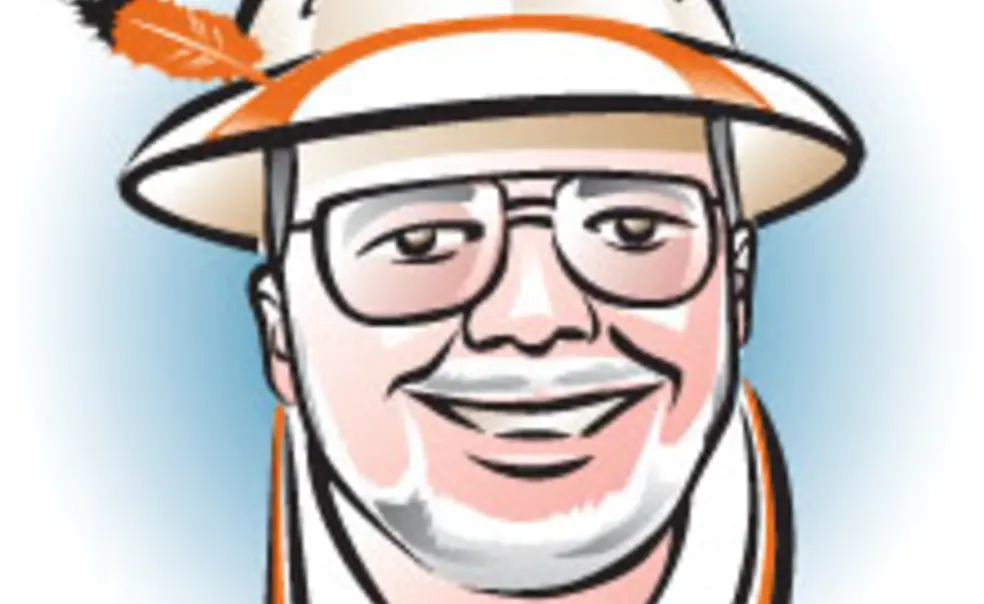
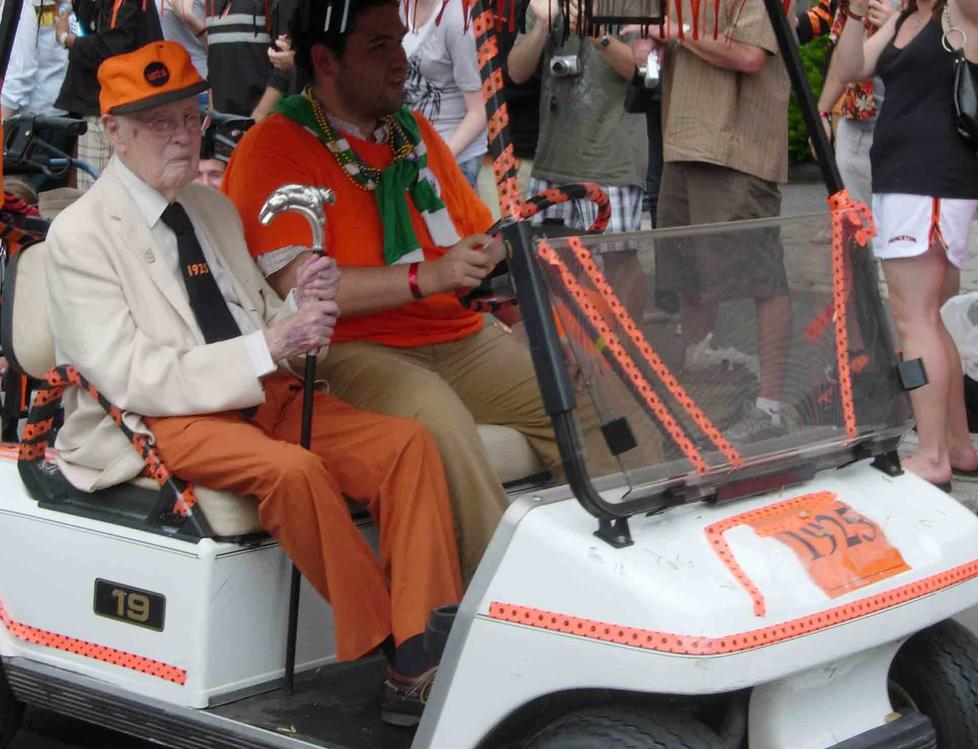









No responses yet